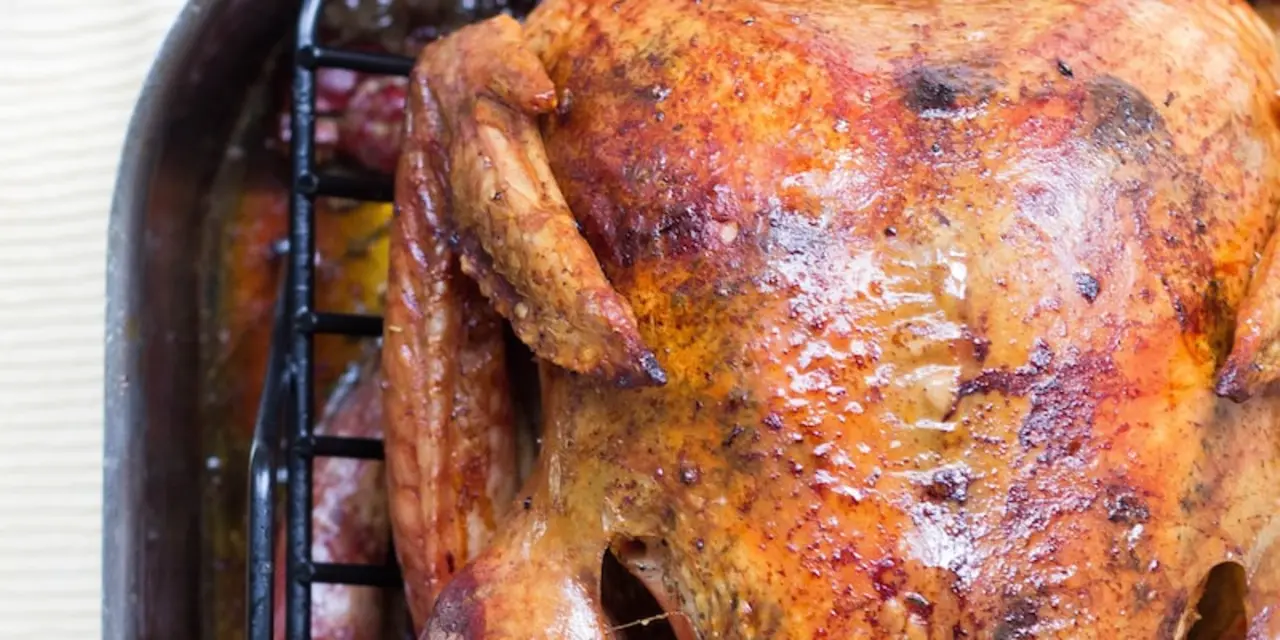How long do you bake boneless chicken breasts at 325?

The Perfect Temperature for Baking Boneless Chicken Breasts
When it comes to baking boneless chicken breasts, the perfect temperature is essential for achieving the best results. The general rule of thumb is to cook chicken at 325°F, which is often referred to as the “Goldilocks” temperature for achieving the desired texture and flavor.
At 325°F, the chicken will cook evenly and quickly. It will be juicy on the inside and golden brown on the outside. It won’t be overcooked or dry, and it won’t take an eternity to cook either. It will also be delicious and flavorful.
How long do you bake boneless chicken breasts at 325°F? The answer depends on the size of the chicken breasts. For small chicken breasts, you’ll need to bake them for about 20 minutes. For larger chicken breasts, you’ll need to bake them for about 25 minutes. However, the best way to know when the chicken is done is to use a meat thermometer to check the internal temperature, which should be 165°F.
It’s important to note that chicken breasts should be placed in a preheated oven. This ensures that the chicken cooks evenly and quickly. It’s also important to use an oven thermometer to check the accuracy of the oven temperature.
Finally, it’s important to let the chicken rest for a few minutes before serving. This allows the juices to redistribute, resulting in a juicier and more flavorful chicken.
By following these simple tips, you’ll be able to achieve perfect results every time you bake boneless chicken breasts at 325°F.
A Step-by-Step Guide to Baking Boneless Chicken Breasts at 325°F
Boneless chicken breasts are a delicious and easy meal option for busy weeknights. But what is the optimal cooking time to make sure the chicken is cooked through without drying out? This step-by-step guide will tell you all you need to know about baking boneless chicken breasts at 325°F.
Step 1: Preheat Oven to 325°F
For best results, preheat the oven to 325°F before baking your chicken breasts. This will ensure that the chicken cooks evenly and at the right temperature.
Step 2: Place Boneless Chicken Breasts on Baking Sheet
Place the boneless chicken breasts onto a baking sheet. If desired, season with salt, pepper, garlic powder, or any other herbs or spices of your choice.
Step 3: Bake for 25-30 Minutes
Place the baking sheet in the preheated oven and bake for 25-30 minutes. The exact cooking time will depend on the size and thickness of the chicken breasts, so be sure to check for doneness using a meat thermometer.
Step 4: Let Chicken Rest for 5 Minutes
Once the chicken is cooked through, remove it from the oven and let it rest for 5 minutes before serving. This will allow the juices to redistribute and prevent the chicken from drying out.
Step 5: Serve and Enjoy!
Your boneless chicken breasts are now ready to be served! Enjoy them with your favorite side dishes for a delicious and easy weeknight meal.
The Benefits of Baking Boneless Chicken Breasts at 325°F
Baking boneless chicken breasts at 325°F can be an easy and healthy way to get a delicious meal on the table in no time. Baking chicken at this temperature offers some great benefits that make it a great choice for home cooks looking for a simple yet flavorful meal.
One of the biggest benefits of baking boneless chicken breasts at this temperature is that it helps to lock in the flavor. The low and slow cooking process helps to keep the chicken moist and juicy and helps to bring out the best of the flavors. In addition, the lower heat helps to keep the chicken from becoming overdone and dry.
Another great benefit of baking boneless chicken breasts at 325°F is that it helps to keep the chicken safe to eat. Cooking chicken at a lower temperature helps to ensure that all of the bacteria are killed, making it safe to enjoy. This is especially important for those who are pregnant, young children, or elderly, as they may be more susceptible to foodborne illnesses.
Finally, baking boneless chicken breasts at 325°F also helps to keep the nutrients intact during the cooking process. The lower temperature helps to ensure that the chicken's natural vitamins and minerals are not lost, helping to provide a nutritious meal. This is especially beneficial when serving chicken to the whole family.
Overall, baking boneless chicken breasts at 325°F can be an easy and healthy way to get a flavorful and nutritious meal on the table. The lower temperature helps to lock in the flavor, keep the chicken safe to eat, and retain the nutrients, making it a great choice for home cooks looking for an easy meal.
Tips for Achieving Perfectly Baked Boneless Chicken Breasts at 325°F
If you’re looking for a foolproof way to make the perfect boneless chicken breasts every time, baking them at 325°F is the way to go. Here are some tips for acheiving the perfect result.
Choose the Right Chicken
When it comes to baking boneless chicken breasts, the quality of the chicken you choose can make all the difference. Look for chicken breasts that are thick, plump, and free of any visible fat or discoloration. If you’re not sure, ask for help from the butcher at your local grocery store.
Prepare the Chicken
Before baking, you’ll want to make sure your chicken is properly prepared. Start by washing the chicken with cold water and patting it dry with a paper towel. Then, season the chicken with a light layer of salt and pepper, making sure both sides are covered. To take it a step further, you can also add some herbs and spices for extra flavor.
Bake the Chicken
Place the chicken breasts on a baking sheet lined with foil or parchment paper. Bake in the oven at 325°F for 20-25 minutes. If you want to ensure the chicken is cooked through, you can use a meat thermometer to check the internal temperature of the chicken. It should read 165°F or higher.
Rest and Serve
Once the chicken is done baking, you’ll want to let it rest for a few minutes before serving. This will help keep the juices inside and make for a more flavorful and tender chicken. Enjoy your perfectly baked boneless chicken breasts!
What to Look for When Baking Boneless Chicken Breasts at 325°F
When baking boneless chicken breasts at 325°F, there are a few key things to look out for. First, make sure the chicken is completely thawed if using frozen. If the chicken is still frozen, it will not cook evenly and can lead to a tough and dry result. Secondly, make sure the chicken is evenly sized. If you have a few large pieces, it will take longer to cook, while smaller pieces may be done before the larger ones.
To ensure even cooking, be sure to preheat the oven to 325°F before placing the chicken in. This will allow the chicken to cook evenly and prevent it from becoming dry or overcooked. Additionally, it is important to season the chicken before cooking. This will give the chicken more flavor. A simple seasoning of salt and pepper or garlic and herbs is all that is needed.
Before placing the chicken in the oven, make sure to lightly coat it with olive oil. This will help to add moisture and prevent sticking. Then, place the chicken on a lightly greased baking sheet. Make sure to evenly space the chicken so that it will cook evenly. The chicken should be baked for approximately 20-25 minutes, or until it is no longer pink in the center.
Finally, once the chicken is done baking, use an instant-read thermometer to check the internal temperature. The chicken will be done if the internal temperature is 165°F. This will ensure that the chicken is cooked through and that it is safe to eat. If the internal temperature is lower than 165°F, continue to bake the chicken until it reaches this temperature.
By following these simple steps, you can ensure that your boneless chicken breasts are cooked evenly and to perfection. With a little bit of preparation and attention to detail, you can bake delicious and juicy boneless chicken breasts at home.

Write a comment